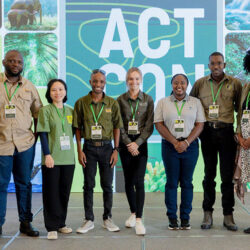CCF’s Scat Detection Dog Team Visits Angola
-
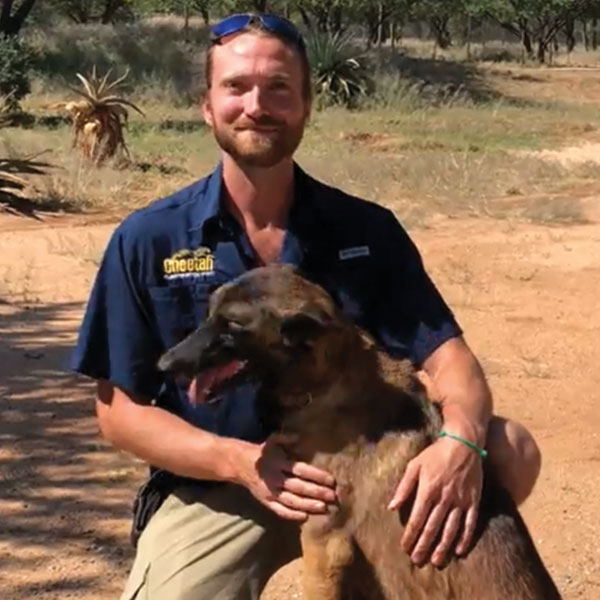
- by Tim Hofmann August 22, 2019
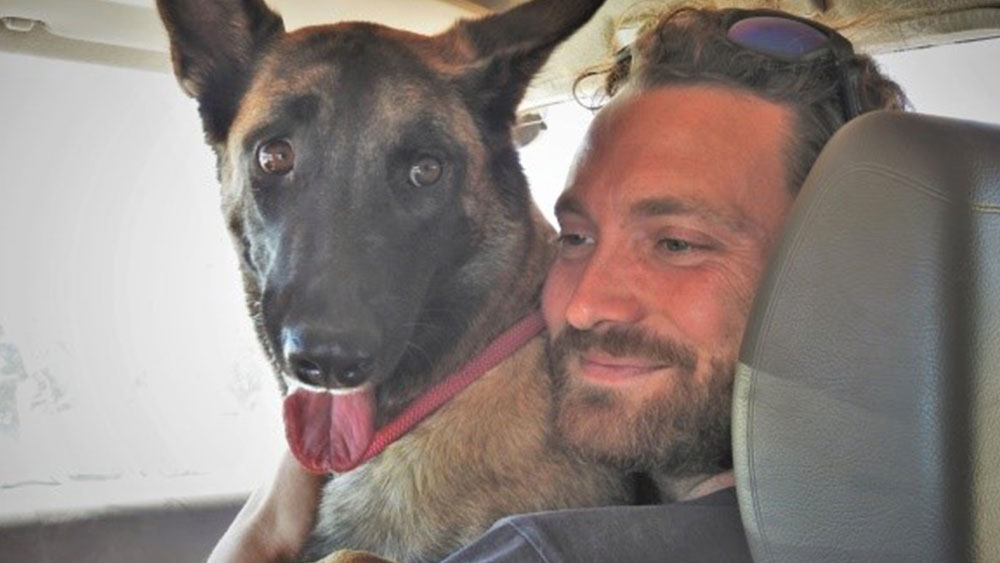
In June, CCF’s scat team visited Angola for the third time, to assist a team of researchers searching for predator scat. This trip was particularly exciting as it was the first time for myself and Enya traveling to Angola. Enya is only 1.5 years old, she’s had training and is still maturing. Though she is young, she shows so much talent and she has excellent working skills. It was a natural conclusion to use her for this expedition.
After weeks of preparing visas, permits, vaccinations and flight arrangements, Enya and I travelled to Windhoek to fly to Lubango, Angola. It was quite emotional having to say goodbye to her at the cargo department of the airport and I hoped that she would deal well with her first flight. Her natural working dog traits helped her deal with this new and challenging situation and she came through just fine. The flight wasn’t very long but we did have to wait 4 hours in customs, though all our permits were in order. We were both very happy to see each other again. We then began Enya’s first big expedition as CCF’s main scat detection dog.
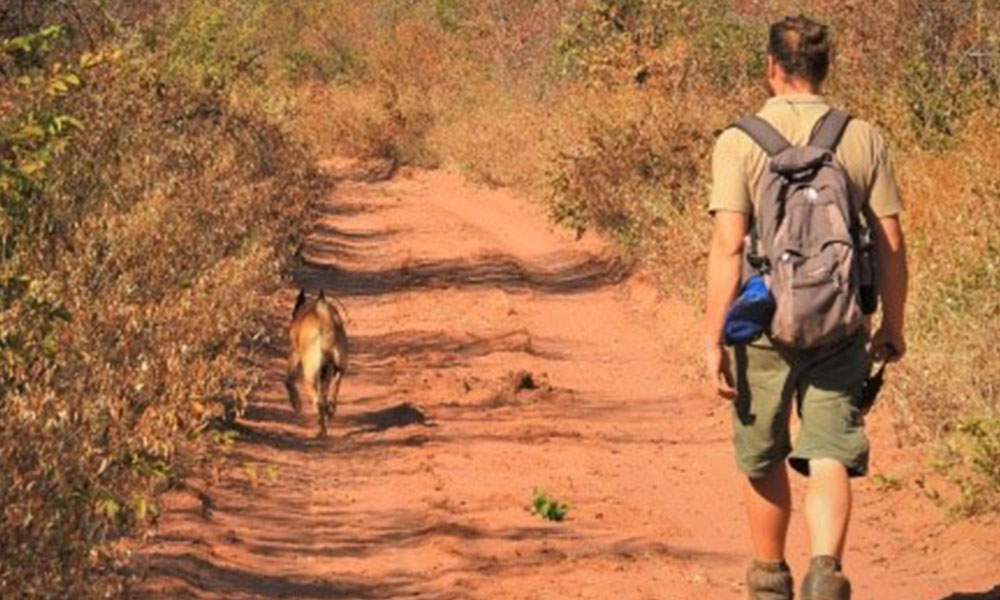
After meeting the whole team and spending a night in Lubango we headed out to Bicuar National Park which was about 150 km away. It isn’t really a long journey but we were a 5 five person and one dog team in a car with expedition gear, personal luggage. Enya travelled on my lap, the whole way. We were all happy to arrive at the park and stretch our legs. Early the next morning we started with our work.
Enya enjoyed the new environment a lot but I could see from the beginning that she was a bit nervous and unsure as she would spend a lot of time walking close to me or even behind me. I began to realise that it was the presence of elephants that made her worried as she never had contact with them before and there was evidence of them everywhere. The dense bush was broken down and there were elephant tracks and dung on our path every other meter. Sometimes we could even smell the animals. We didn’t manage to see one single elephant during the time of our stay, even though we could see that an elephant had broken down a tree right next to our house during the night. I think the whole team was just too tired from working to wake up for the mysterious, tree-felling, sneaky elephants. To be fair, the vegetation was so dense that we wouldn’t have been able to see them at ten meters distance.
The more time we spent in the park the more comfortable Enya got with the elephant smells and sounds. It was very interesting to see how she sniffed every track with curiosity. Elephants are now one of the species that characterize the park. Before the Angolan civil war there were also big herds of antelopes and zebra but their populations have been depleted. It was very exciting to support a study that investigates the species composition now after so many years of peace.
I was very curious to see how Enya would perform on her own. We assumed from our camera footage that cheetahs were not present in the study area. That brought some unique challenges as the general principal of a scat dog is that she is trained on one species and indicates by sitting when she finds a target sample from that species. In Bicuar, I hoped that a her general interest in scat would be sufficient enough for us to find some samples. I had to watch her even more carefully then I would usually do, so I would not miss when she sniffed a scat.

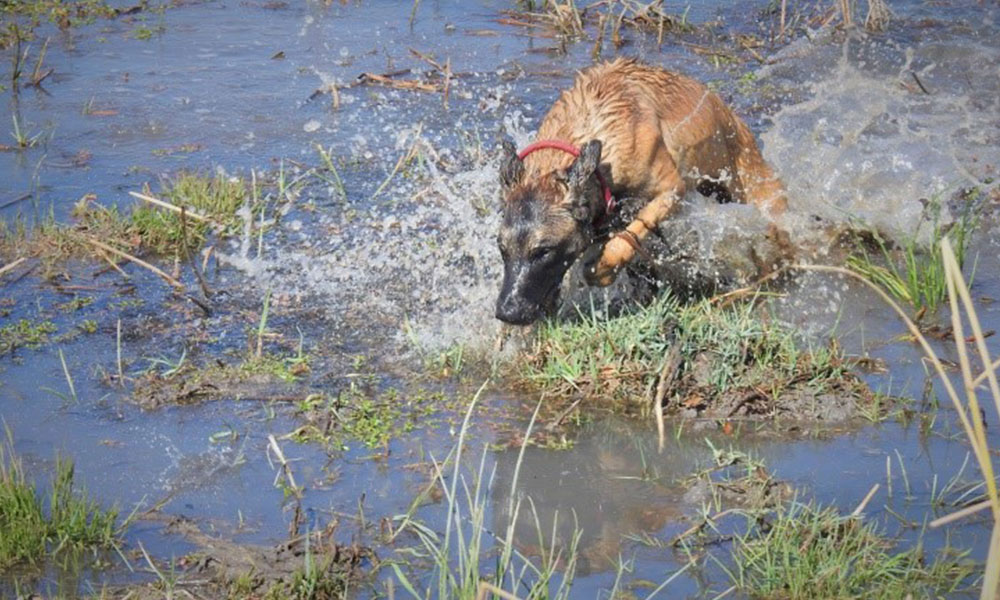
After one week of searching, Enya and I found 99 scat samples, which is quite an impressive number. Many of these samples would have never been found without Enya. Throughout the trip she even showed us samples that were slightly buried. In one case she nearly pushed one of the scientists aside and started digging and then looked at me. It took me a while to see the scat that she dug out, which was about the size of a peanut, but it was a predator scat. The daily work was quite challenging but the austral winter offered cooler conditions. The higher the sun rose throughout the days the hotter it got so I tried to plan the searches so that they ended at a waterhole. Whenever that was possible Enya enjoyed it a lot, and the rangers accompanying us had a good laugh about how crazy she goes when going for a swim.
The week passed quickly and when traveling to our next destination I began to appreciate the roads in Namibia more and more. Quite often, in Angola, there is a paved road but the condition is so bad that people drive in the dirt next to it, so it took us two days to reach Cuatir. Travelling is an amazing experience and I enjoyed the drive a lot. Angola has a lot more water and is a lot greener then Namibia and I only realized then how much I missed seeing trees and rivers. One river we had to cross was the Cubango which will later connect with other streams and become the Okavango, one of the most iconic rivers in Africa. The beauty of nature was amazing but the contrast to poverty and the reminders of war make the natural wonders seem surreal. We passed burned out tanks and cars that have been sitting motionless since 2002 and active mine fields waiting to be cleared. However, once deep in the bush you could be lulled into believing that the war never happened.
Working in Cuatir was a lot different as we had good transportation and the open flood plains characterizing the study area made moving a lot easier. Enya did very well and struggled a lot less with the new environment this time. Our camera traps showed that cheetahs were present in this study area but we were not able to detect any cheetah scat. It helps a lot to know the cheetah’s marking sites to find scat which we were unfortunately not able to find on this trip. Since the objective was still to find as many scats of different predators as possible we did not spend too much time trying to find these sites but rather focused on road searches as we know that those guarantee the highest sample return. This way we managed to collect 51 scat samples. This was a much higher number compared to the amount of samples found by CCF’s team who previously visited Angola in March. It is important to keep in mind though that March is the wet season which typically has higher rainfalls that washes away scats and there is a higher activity of dung beetles. This means it is more likely to find more samples in the dry season. It will be very exciting to collect more data from the different seasons which will allow us to compare the different trips and evaluate our team’s work more objectively.

Towards the end of the trip I could see that Enya’s energy was decreasing a bit. The whole team was very tired because field work is very exhausting (though it is also very fulfilling). We were all happy to return safely to CCF and crossing the borders without any delays or troubles. I am very happy with how this trip went as our team did a great job in finding a lot of samples that will help us to better understand the predators’ situation in Angola. Personally I am taking away a lot from this trip with not only being happy about seeing such an interesting place but especially because I got to experience that with Enya. It is an incredible feeling to raise and train a dog and accompany her on her way to becoming a fully sufficient working dog. To be a part of the first time she sniffs a scat, to showing her elephant tracks for the first time, and most importantly seeing her confidence and determination grow is amazing. We are all looking forward to the next field season and what it has in store.
Related Reading
-
August 27, 2025
Sniffing Out Stories with the Scat Detection Dog Team

